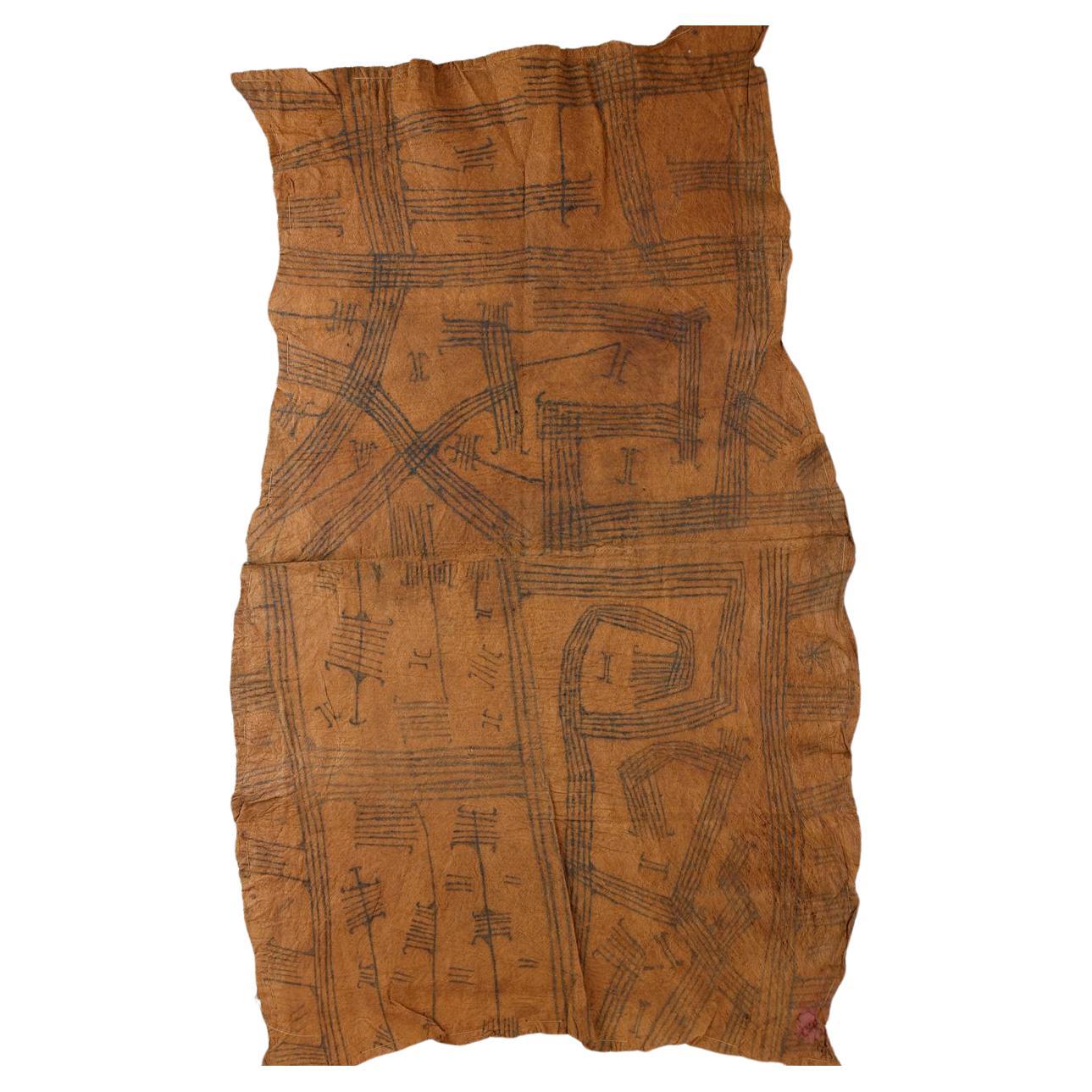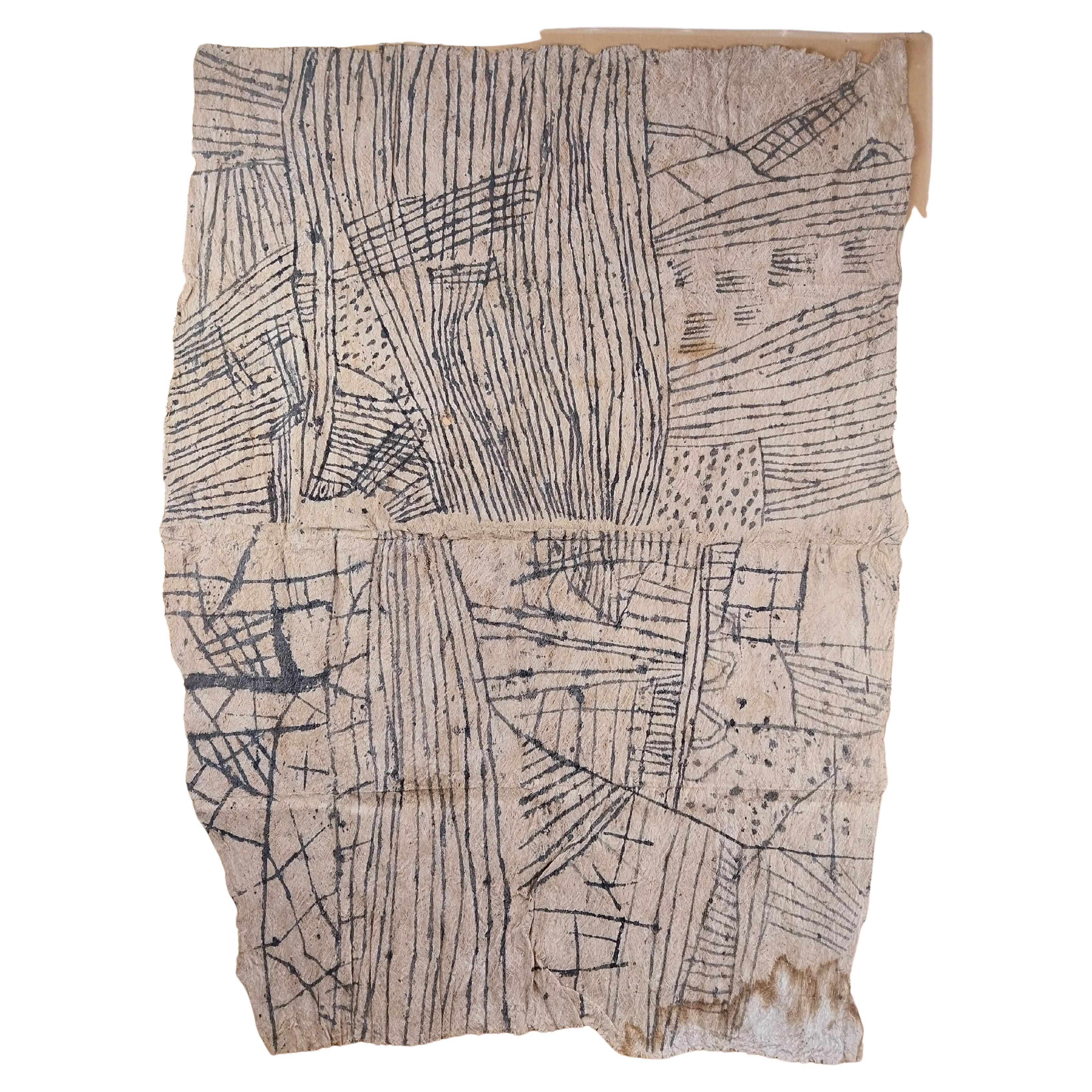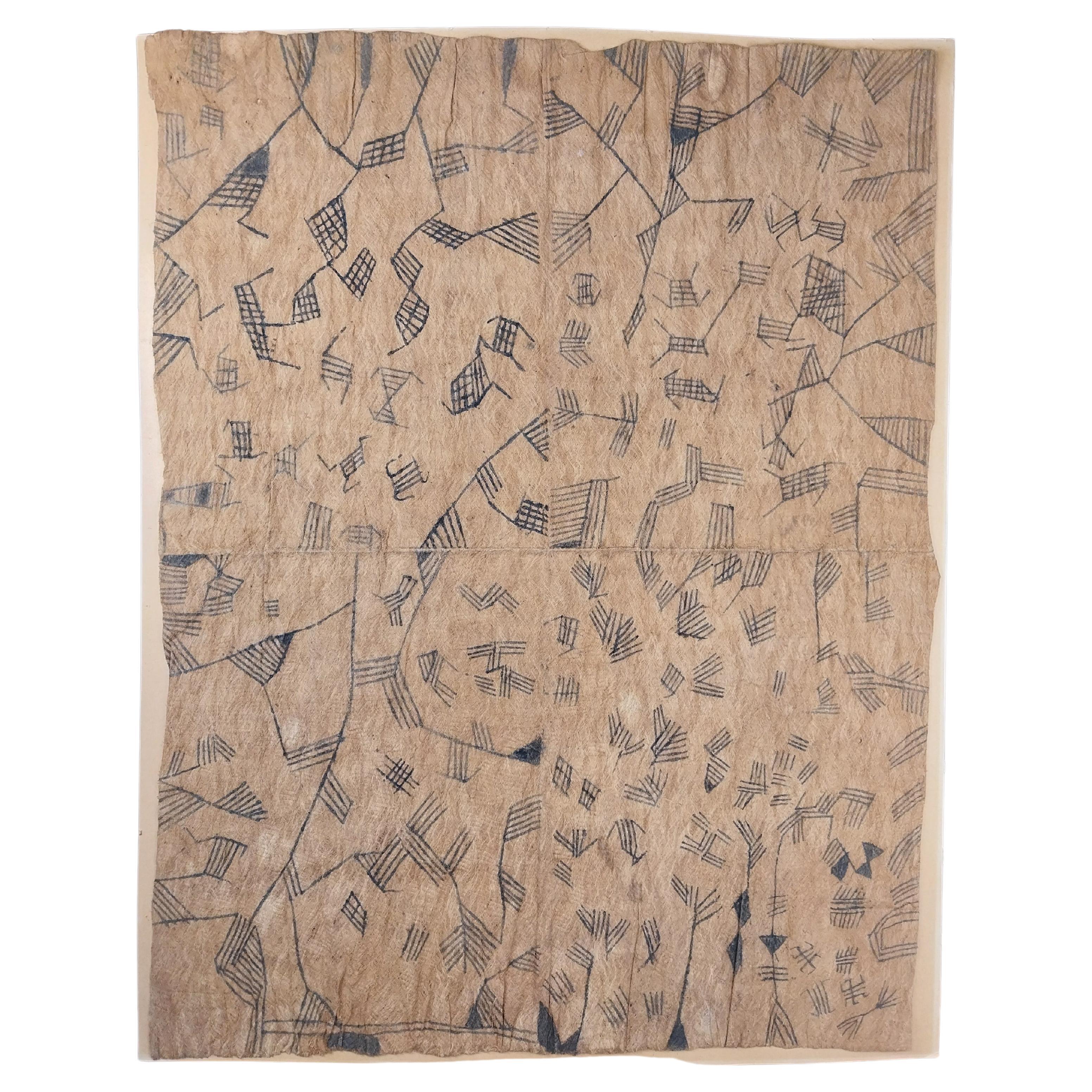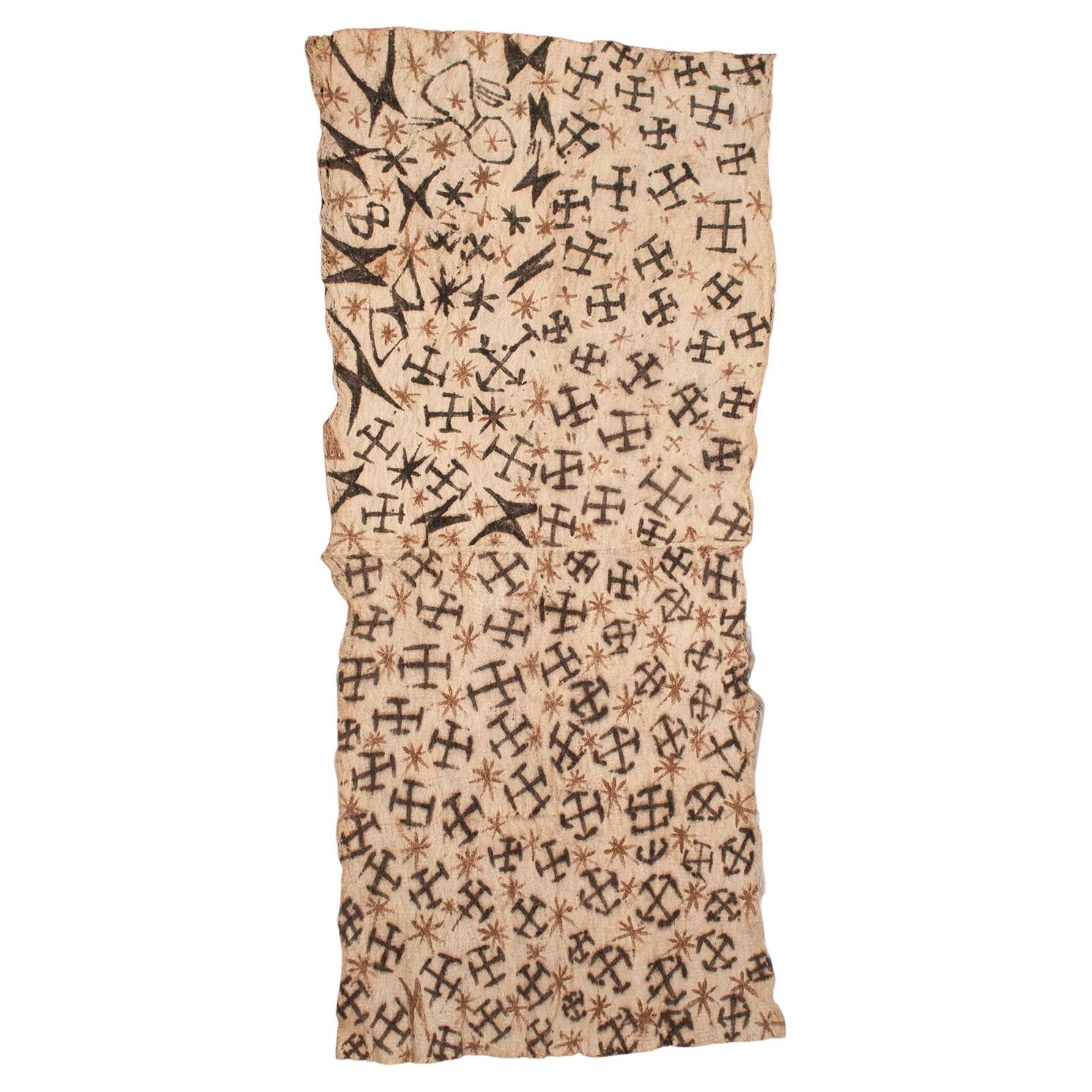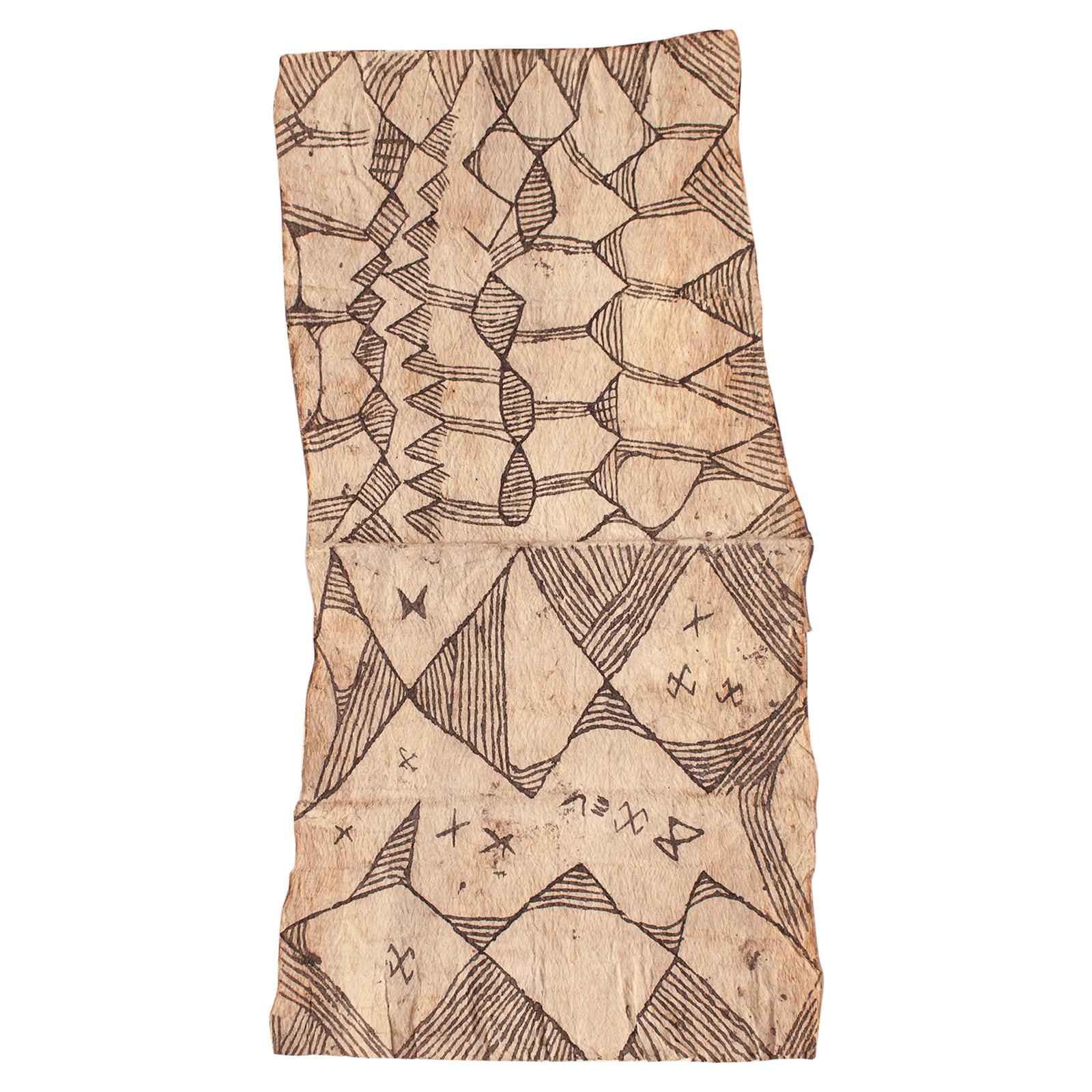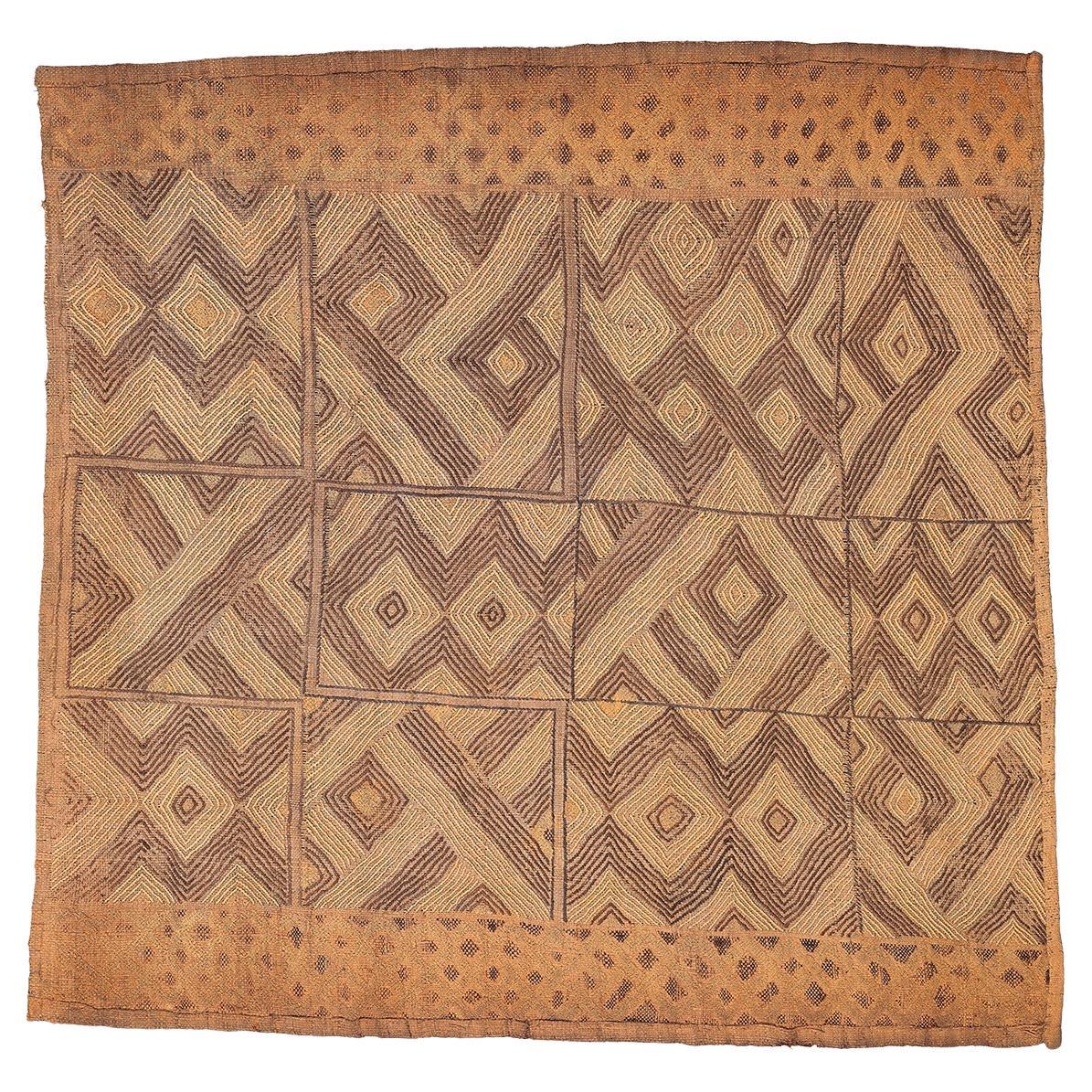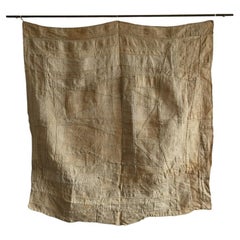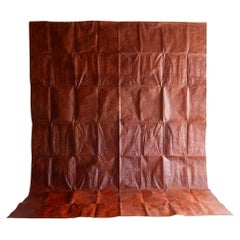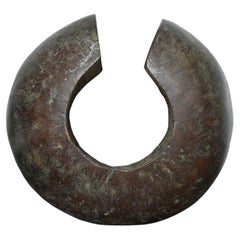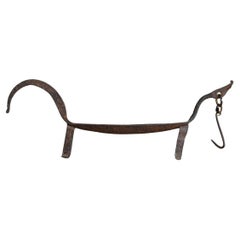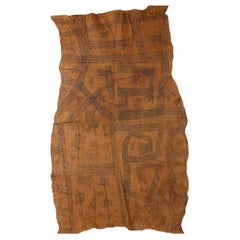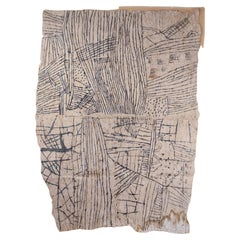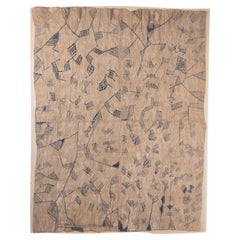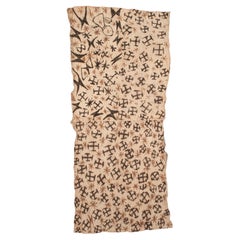Items Similar to Old African bark cloth/20th century/Mbuti Pygmy Barkcloth Textile
Want more images or videos?
Request additional images or videos from the seller
1 of 21
Old African bark cloth/20th century/Mbuti Pygmy Barkcloth Textile
$1,000
£758.14
€873.93
CA$1,408.34
A$1,561.74
CHF 820.58
MX$19,081.86
NOK 10,266.59
SEK 9,636.94
DKK 6,524.07
About the Item
This cloth was made by the Mbuti people, a pygmy tribe living in the Democratic Republic of the Congo. The Mbuti are hunter-gatherers who live in the Ituri rainforest, a tropical rainforest that spreads across the northeastern part of the Democratic Republic of the Congo.
They are characterized by their small size, and are said to never exceed 150 cm in height.
This bark cloth is made by tapping softened tree bark and applying various patterns to it, or by connecting pieces dyed in different colors together.
In addition to using it as clothing for themselves, it was also given to neighboring tribes for medical treatment and barter.
In the 1980s, it was also exported to Europe and America as a trade item.
It was basically made to be used as an apron or loincloth, and is about 70cm to 80cm long and 40cm to 70cm wide.
There are a variety of free and interesting patterns, and the design is geometric and reminiscent of abstract paintings.
Specialist books contain other designs and photos of the production process, so please take a look.
There are still some that were imported to Japan a long time ago, and this is thought to be one of them.
There are not many left, so this is a rare piece.
If you pin it on the wall and display it, it will look like a beautiful decorative painting.
Highly recommended.
Weight: approx. 130g
- Dimensions:Height: 34.65 in (88 cm)Width: 16.15 in (41 cm)Depth: 0.08 in (2 mm)
- Style:Other (In the Style Of)
- Materials and Techniques:
- Place of Origin:
- Period:
- Date of Manufacture:20th century
- Condition:
- Seller Location:Sammu-shi, JP
- Reference Number:1stDibs: LU5487243740032
About the Seller
5.0
Platinum Seller
Premium sellers with a 4.7+ rating and 24-hour response times
Established in 2015
1stDibs seller since 2020
1,624 sales on 1stDibs
Typical response time: 7 hours
- ShippingRetrieving quote...Shipping from: senzoku, Japan
- Return Policy
Authenticity Guarantee
In the unlikely event there’s an issue with an item’s authenticity, contact us within 1 year for a full refund. DetailsMoney-Back Guarantee
If your item is not as described, is damaged in transit, or does not arrive, contact us within 7 days for a full refund. Details24-Hour Cancellation
You have a 24-hour grace period in which to reconsider your purchase, with no questions asked.Vetted Professional Sellers
Our world-class sellers must adhere to strict standards for service and quality, maintaining the integrity of our listings.Price-Match Guarantee
If you find that a seller listed the same item for a lower price elsewhere, we’ll match it.Trusted Global Delivery
Our best-in-class carrier network provides specialized shipping options worldwide, including custom delivery.More From This Seller
View All20th century Korean old cloth "pojagi"/Wall hanging object/Tapestry
Located in Sammu-shi, Chiba
This is an old Korean patchwork cloth made around the 20th century.
The name is ``pojagi'' or ``chogappo.''
It is a cloth used to cover, wrap, or wrap things to protect them, and is ...
Category
20th Century South Korean Other Textiles
Materials
Cotton
Japanese Antique Paper Wabi-Sabi Washi
Located in Sammu-shi, Chiba
This rare shichou-maku (paper-hung curtain) was crafted during Japan’s Meiji period (late 19th to early 20th century).
It was originally used in sericulture rooms—spaces dedicated ...
Category
Antique Early 19th Century Japanese Edo Tapestries
Materials
Paper
Old Copper Coins of Congo, Africa / Rare Objects / Folk Art/20th century
Located in Sammu-shi, Chiba
This is an old African coin.
Before paper money and money were in circulation, bartering was taking place in Africa.
Various goods such as textiles, fea...
Category
20th Century Congolese Other Tribal Art
Materials
Copper
20th Century-African, Iron Object Made by the Lobi Tribe of Burkina Faso, Africa
Located in Sammu-shi, Chiba
An iron figurine made in Africa around the 20th century.
In many countries in Africa, iron objects are used for objects, coins, tools, and rituals.
Dogo...
Category
20th Century Burkinabe Tribal Tribal Art
Materials
Iron
Japanese antique bamboo woven basket/wall hanging vase/1868-1920/Mingei
Located in Sammu-shi, Chiba
This is a woven bamboo basket made in Japan from the Meiji to Taisho periods (1868-1920).
I don't know if the baskets actually used by farmers were repurposed as flower vases, or if ...
Category
Early 20th Century Japanese Meiji Decorative Art
Materials
Bamboo
Antique Large Bag Made of Japanese Paper and Rope / 1868-1920 / Wabi-Sabi Object
Located in Sammu-shi, Chiba
This is a highly valued paper bag made from farm tools from the Meiji to Taisho periods (c. 1868-1920). Originally used at silk mills to store dried silkworm cocoons for long periods...
Category
Antique Late 19th Century Japanese Meiji Antiquities
Materials
Paper
You May Also Like
Fine 1950's Mbuti Bark Cloth With Biomorphic Motifs
Located in London, GB
In the Democratic Republic of the Congo, the asymmetric, spontaneous and animated patterns of bark cloths made by Mbuti women for dances, festivities and coming-of-age ceremonies ref...
Category
Vintage 1950s Congolese Tribal Tribal Art
Materials
Natural Fiber
Mbuti Ituri traditional handpainted Pygmee bark cloth
By OTHR
Located in Zemst, BE
Mbuti Ituri (Congo) traditional handpainted Pygmee bark cloth.
+/- 1920
These cloths we're made from the inside of the bark of the Ficus latex tree.
After been prepared and dryed, ...
Category
Early 20th Century Congolese Tribal Tribal Art
Materials
Wood
Mbuti Ituri traditional handpainted Pygmee bark cloth
By Icons
Located in Zemst, BE
Mbuti Ituri (Congo) traditional handpainted Pygmee bark cloth.
+/- 1920
These cloths we're made from the inside of the bark of the Ficus latex tree.
After been prepared and dryed, ...
Category
Early 20th Century Congolese Tribal Tribal Art
Materials
Wood
20th Century Bark Cloth Painting, Mbuti People, D.R. Congo
Located in Point Richmond, CA
20th Century bark cloth painting, Mbuti people, Ituri Forest, D. R. Congo
A wonderful barkcloth from the Mbuti people in the Ituri forest of northeastern Democratic Republic of the ...
Category
Vintage 1970s Congolese Tribal Drawings
Materials
Natural Fiber
20th Century Bark Cloth Painting, Mbuti 'Efe' People, D.R. Congo
Located in Point Richmond, CA
20th Century bark cloth painting, Mbuti (Efe) people, Ituri Forest, D. R. Congo
A painted barkcloth from the Efe people in the Ituri forest of no...
Category
Vintage 1970s Congolese Tribal Drawings
Materials
Natural Fiber
Tribal Textile, Kuba Shoowa 20th Century
Located in Point Richmond, CA
A late 19th or early 20th century Kuba Prestige cloth, mostly embroidered with cut pile borders.
Category
Early 20th Century Congolese Tribal Tribal Art
Materials
Natural Fiber
More Ways To Browse
Tree Bark
Democratic Republic Of The Congo
Bark Furniture
Congo African Art
Japanese Tree Bark
Congo Cloth
Bark Cloth
Vintage Barkcloth
Mbuti Bark Cloth Painting Congo
Kimono Display
Peonies Embroidery
Uzbek Table
Uzbekistan Table
Chinoiserie Embroidery
Framed Chinese Embroidery
Qing Embroidery
Asian Men
Chinese Embroidered Panel
